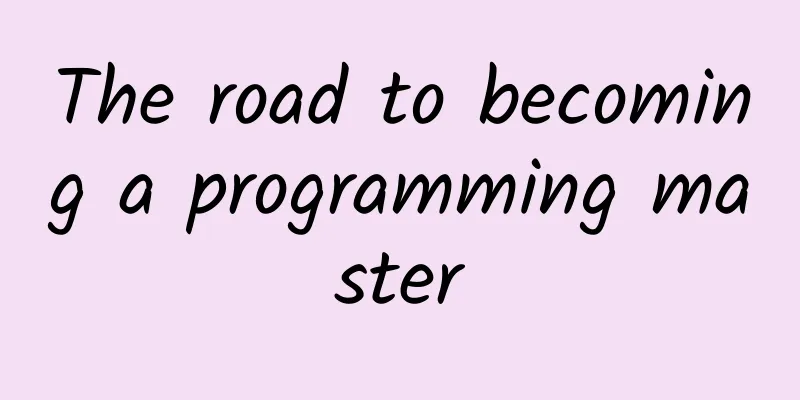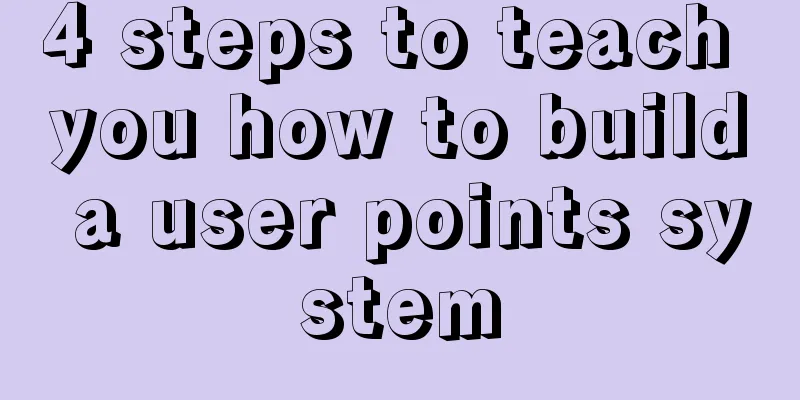The road to becoming a programming master

|
The reason why outstanding programmers are so successful is that they are always exercising. A perfect body can only be achieved through regular exercise, and it must be maintained through constant exercise, otherwise the body will get out of shape. The same is true for programming and software engineering. This is an important distinction - I drive to work every day, but my driving skills are far from professional drivers; similarly, programming every day may not be enough to make you a professional programmer. So, what can turn an ordinary person into a professional driver or a professional programmer? The answer lies in an article in Scientific American titled “The Expert Mind”: Ericsson proposed that what is important is not experience itself, but "hard learning", that is, constantly challenging oneself beyond one's own ability. Some avid enthusiasts spend a lot of time playing chess, playing golf or playing musical instruments, but they may always remain at the amateur level, while a well-trained student can surpass them in a relatively short time. This is why. It is worth noting that in terms of improving level, a lot of time spent on playing chess (even participating in various competitions) does not seem to be more effective than dedicated training. The main value of training is to discover weaknesses and improve them in a targeted manner. "Studying hard" means that you should always deal with problems that are just at the limit of your ability, that is, things that are very likely to fail for you. If you don't experience some failures, you may not grow. You must constantly challenge yourself and surpass your limits. Sometimes such challenges are encountered in the workplace, but not always. Separating training from professional work is often called "Code Kata" in the programming field. The concept of Code Kata was proposed by David Thomas, one of the authors of "The Programmer's Way: From Labourer to Expert". This concept mainly refers to the repetitive practice of a specific technology or skill in order to master it. -Translator's Note The so-called routine is a series of moves, a concept borrowed from martial arts. If you want to see some examples of coding katas (meaning ways to work hard to learn and hone your programming skills), Steve Yegge's article has some good suggestions. He calls them "practice exercises": 2. List the programmers you admire. Try to include those you work with, because you will learn some skills from them in your work. Record 1 or 2 shining points in them, that is, the aspects you hope to improve yourself. 3. Look up the "Computer Science" section on Wikipedia and find the category "Pioneers in Computer Science." Pick a person from that list and read about him or her, following any links that interest you while you're at it. 4. Spend 20 minutes reading through other people's code. It's helpful to read both good code and bad code. Read both and switch back and forth. If you can't feel the difference, ask a programmer you respect to show you what good code is and what bad code is. Show the code you read to others and ask them what they think. 5. List your 10 favorite programming tools - the ones you feel you use the most and can't live without. Pick one of them at random and spend an hour reading its documentation. In this hour, try to learn a new feature of the tool that you didn't realize, or discover a new way to use it. 6. Think about what you are best at besides programming? Think about how you became so skilled and professional? What inspiration does this give you for your programming work? (How can you apply these experiences to programming?) 7. Take out a stack of resumes and spend an hour in the same room with a group of interviewers. Make sure each resume is reviewed by at least three interviewers and given a score of 1 to 3. Discuss those resumes that are judged very differently by different interviewers. 8. Take a phone interview. Write down your feedback afterwards, throw out your opinions, and then chat with the person who conducted the phone interview to see if you have reached the same conclusion. 9. Conduct a technical interview with an expert in a field you don't know much about. Have him assume that the audience knows nothing about the field, so ask him to start with the basics. Try to understand what he says and ask questions if necessary. 10. Have the opportunity to participate in other people's technical interviews. During this period, you just listen carefully and learn carefully. While the candidates are working hard to solve technical problems, you should also try to solve these problems in your own mind. 11. Find someone who can exchange practical problems with you, and exchange programming problems with each other every week. Spend 10 to 15 minutes trying to solve these problems, and then spend another 10 to 15 minutes discussing them (regardless of whether they can be solved or not). 12. When you hear any interview question that you can't solve right away, go back to your desk, email the question to yourself as a reminder for later, and find some time during that week to solve it in your favorite programming language. What I like about Steve's list is that it seems comprehensive. Some programmers think of "exercise" as coding puzzles. But in my opinion, programming is more about people than code. Therefore, solving every obscure programming interview question in the world is a limited way to improve your personal skills. Regarding “hard work”, I also like many of the suggestions made by Peter Norvig in “Teach Yourself Programming in TenYears”: 1. Talk to other programmers. Read other people's code. This is more important than any book or training course. 2. Start programming! The best way to learn is to learn by doing. 3. Take a programming course in your undergraduate or graduate program. 4. Find some projects to work on and need to form a team with other programmers. During the project, learn to identify the best programmers and the worst programmers. 5. Work with other programmers on a project to learn how to maintain code that you didn’t write, and learn how to write code that is easy for others to maintain. 6. Learn multiple different programming languages, especially those that have a different worldview and programming model from the languages you are currently familiar with. 7. Understand the impact of hardware on software. Know how long it takes your computer to execute an instruction, how long it takes to fetch a word from memory (with or without cache), how long it takes to transfer data over an Ethernet (or the Internet), how long it takes to read sequential data from a disk or jump to another location on a disk, and so on. You can also get inspiration from Dave Thomas's 21 Useful Coding Katas (CodeKata.com), or you might prefer to join a local "coding gym" (CodingDojo.org). I can’t offer a long list of tips for “learning hard” like Steve, Peter, or Dave. I’m not nearly as patient as they are. In fact, in my opinion, “coding kata” only requires two moves: 1. Blog. I started CodingHorror.com in early 2004 as a way to educate myself. It started out as a humble blog, and has become the most important thing I've ever done in my career. So should you. The people who are most "famous" are those who can write and communicate effectively. They have the loudest voices, they are the ones who set the rules of the game, and they are the ones who are leading the world. 2. Actively participate in famous open source projects. All the talk sounds good, but are you a big talker or a doer? It is very important not to talk all the talk, because people will judge you by your actions, not your words. Try to leave something tangible and useful in front of the public, so that you can say, "I contributed to that project." When you can write wonderful code and explain it to the world with wonderful words, then I will think you have mastered the best coding routines! |
<<: How did touch-screen phones replace keyboard phones and become popular around the world?
>>: Google internal summary of the reasons for Google+'s failure: mobile layout was too slow
Recommend
Information flow advertising: characteristics and trends!
Feed ads are ads that are inserted into the updat...
How to efficiently achieve active user growth?
“ Retention analysis is an important method and a...
Zunyi Mini Program Customization Company, how much does it cost to customize an office supplies mini program?
What is the price of customizing Zunyi office sup...
The Revelation of Mao Xiaobai's Loss of Money and the Trap Ebook PDF
Download address : https://wwa.lanzoui.com/ixDqTw...
Summary of various bottlenecks encountered on the road of Android learning
[[197644]] Preface For most junior students, this...
Comprehensive analysis of iOS unit testing and UI testing
【51CTO.com Quick Translation】Writing tests is not...
The unspoken rules of Baidu’s bidding promotion ranking!
Traffic is the blood that keeps online marketing ...
Song Yuehan's "Chinese Medicine Syndrome Differentiation Video" teaches you how to accurately diagnose syndromes, and you will understand it after learning it once
Training course video lecture content introductio...
iPhone 13 is coming soon. How long do we have to endure these iOS flaws?
[[423239]] As usual in previous years, Apple will...
What are the advantages of developing a store ordering app?
Traditionally, restaurants use menus to place ord...
The first mistake 90% of marketers make when planning...
At any given moment in any business, there are on...
Chinese characteristics in the eyes of Japanese mobile game industry insiders: unique application distribution and promotion methods
via:appying If overseas games are to be released ...
120.7 billion! How did Alibaba’s operations experts perform during the 2016 Tmall Double 11 event?
In general, the quality of content on Double Elev...
How much does it cost to attract investment in Lanzhou Entertainment Mini Program? What is the investment price for Lanzhou Entertainment Mini Program?
Starting a business requires costs, and mini prog...
A complete analysis of the six major Internet profit models!
In the Internet age, traffic is money. With traff...









